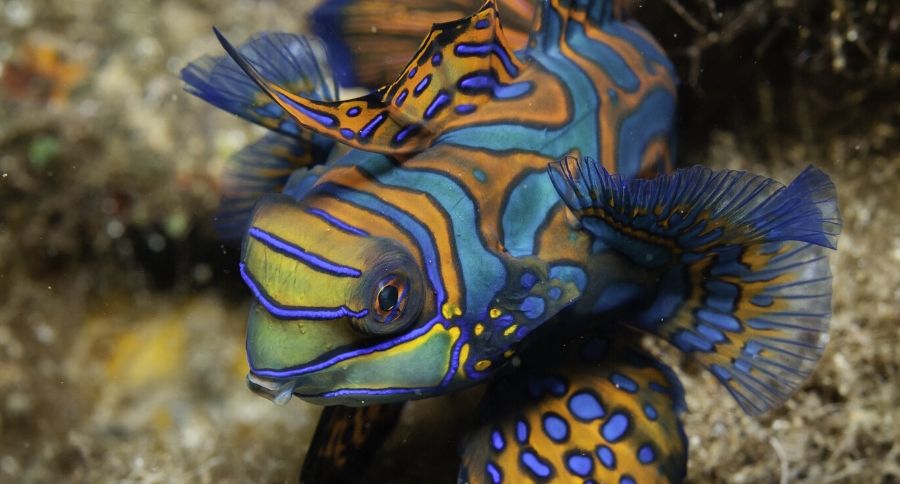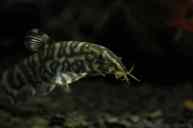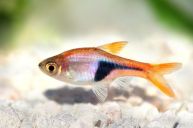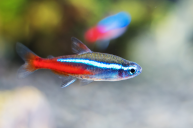There are three varieties and the main species known as the mandarinfish or the Green Mandarin is Synchiropus splendidus.
Other mandarin species include the following:
- Red Mandarin (Synchiropus cf. splendidus)
- Spotted Mandarin (Synchiropus picturatus)
Their unique patterns and bright colors set them apart from other saltwater fish which is why they're so popular! Yet, they have dietary challenges that can be difficult to overcome. We refer to some experts about how to successfully navigate feeding the mandarinfish.
Breed overview
https://www.instagram.com/p/B9FpvUUhtZS/
Saltwater Aquarium Blog provides an overview,
- The scientific names for the two most commonly kept species in the reef aquarium hobby are Synchiropus splendidus, and Synchiropus picturatus.
- Mandarin fish have scaleless bodies in blue or green, with striking orange wavy designs. Their tails are bright purple, red or orange, with blue edging.
- Their average lifespan is between 10-15 years, and their small size makes them suitable for being kept in nano tanks.
Specialized diet
These fish are fussy eaters and they're carnivores!
Fish Keeping World tells us that mandarinfish feed continuously throughout the day whenever they find food perched on the substrate or around rock surfaces.
"In an aquarium, their favorite food is copepod. This is something they eat naturally and is one of the few things they eat in an aquarium. Live rock is important in your tank because it will sustain populations of copepods that your mandarin dragonets can eat. The amount of rock you can keep depends on your tank size. If you want their diet to be solely sourced from the live rock, they will need a well-established, 70-gallon tank."
If your tank is too small, your fish can eat all the available copepods and will need some other foods so that they don't starve. Experts say to try live brine shrimp as they're a popular alternative.
Mandarins should be offered a varied diet of small fresh and frozen foods including brine shrimp, blackworms and other small worms. To wean your fish onto frozen foods, you must provide live foods and slowly introduce frozen foods into their diet.
These peaceful fish may be high maintenance when it comes to feeding but once this is tackled these aquarium fish are easy keepers.
You won't mind when these green mandarinfish seek out their hiding places, if you can keep them eating you'll enjoy watching them!
The coloration of these beauties is why they're so popular.
A little history?
Mandarinfish are native to the Pacific Ocean and they are distributed in the area between the Ryuku Islands and Australia. I bet they're beautiful as wild fish!
Behavior
https://www.instagram.com/p/B8xMx35h1V6/
These are slow-moving fish!
They spend their time at the bottom of the tank looking for food. Because they're so fun to watch, experts promise you won't regret having them in your tank.
This is a peaceful species that should ignore most fish around them. They can be quite shy, often choosing to hide away in caves so pick their tankmates carefully.
Tankmates
According to Fish Keeping World, these fish are peaceful towards other species but fights are usually only between males of their own kind.
"Ideally tank mates will be of a similar size. Larger fish can start to pick on your dragonets and often outcompete them for food, so they go hungry. This species isn't an aggressive feeder, so it doesn't do well when it needs to compete for its food. Mandarin fish need to be kept with other peaceful feeders like seahorses, or with those that eat a different food source."
Some tank makes include Pajama Cardinals, Green Chromis, Firefish, Small Damselfish, Clown Fish, Royal Grammas, Coral Beauty and the Watchman Goby.
These mandarinfish are difficult to keep because of their specialized diet requirements. But while these saltwater fish are high-maintenance "as far as diet" they are beautiful fish for your tank.
For fish supplies, visit Chewy.
Do you have any yellow tang fish in your tank? Please let us know in the below comments!





